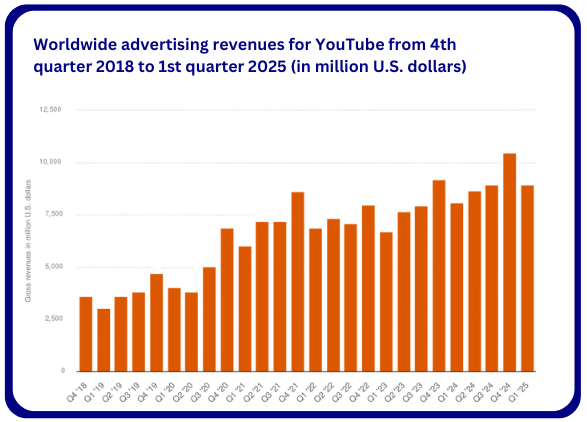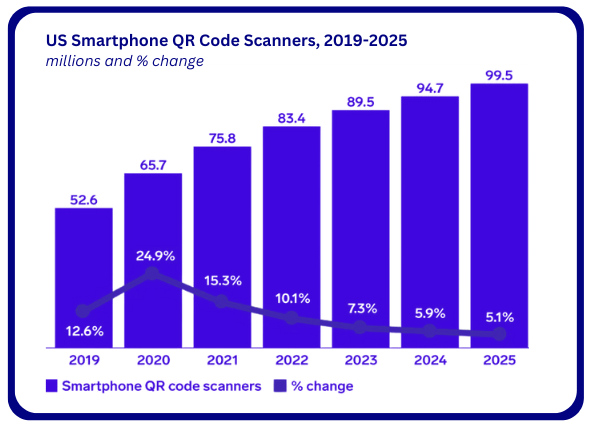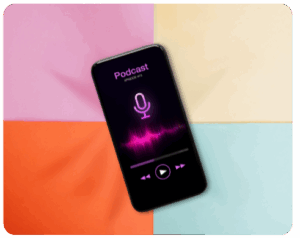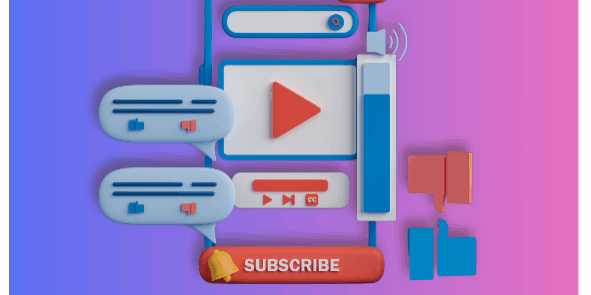
YouTube Sponsorships Deliver
Ready to take your brand from “seen it” to “can’t stop thinking about it”? YouTube sponsorships might just be your next best move. For brands looking to build lasting connections with audiences, YouTube sponsorships deliver ongoing visibility, organic traffic, and content that keeps your brand relevant long after the initial investment.
But how does it work? Where do you start? What should you budget? How do you ensure your campaign actually delivers? In this Ultimate Guide to YouTube Sponsorships, we will walk you through how to get started! From identifying goals to choosing the right creator , we’ll break down the early decision points that set your campaign up for success.
YouTube: More Than a Video Platform
YouTube isn’t just a place to watch videos. It's a place where millions of people go every day to learn something new, discover product recommendations, escape through entertainment, and feel part of something.
For brands, that means one thing: attention.
With YouTube sponsorships brands can access a diverse audience ready to engage with content that interests them and leverage this interest to introduce their products or services both dynamically and memorably, through creators they trust.
If is fair to say that YouTube is one of most powerful platforms for marketers aiming to reach a broad audience. YouTube’s global ad revenues hit $8.92 billion in Q1 2025, a 10% increase from Q3 2024. Viewership continues to grow across desktop, mobile, and TV—especially among cord-cutters and Smart TV users.
YouTube Is for Everyone—But Not Every Brand
YouTube sponsorships are powerful. But they are not a one-size-fits-all solution. If your goal is ultra-local ROI, last-minute sales, or targeting by region or time slot, you may find better value in Google Ads or paid search.
But if you want national reach, brand lift and affinity, education and conversion, and long-tail awareness through evergreen content - then YouTube sponsorships are an excellent way to scale your message and drive measurable action.
Why YouTube Sponsorships Work

When a creator talks about your brand on their channel, they’re recommending it to an audience that trusts them—and that trust carries. Here’s why YouTube sponsorships stand out:
- Authentic Promotion – Creators connect with their audience in personal, engaging ways. When they endorse your product, it feels like a recommendation from a friend.
- Targeted Reach – Sponsorships allow you to reach niche audiences that align with your ideal customers.
- High Engagement – Organic integrations outperform interruptive ads in both attention and retention.
- Creative Freedom – Letting creators tell your story in their voice leads to better performance.
- Evergreen Visibility – YouTube content doesn’t disappear. Well-optimized videos continue generating views, traffic, and conversions long after upload.
YouTube sponsorships allow for authentic promotion, as creators often have a strong bond with their viewers, making their endorsements more credible and influential.
Beyond authenticity, sponsorships offer targeted reach, letting brands tap into specific niches and demographics that align closely with their ideal customer. The result? High engagement.
Viewers are more likely to watch, like, and comment on content that feels like a genuine recommendation rather than an intrusive ad. And with creative freedom baked into the format, creators can present your product in a way that feels organic—showcasing it within their own storytelling style rather than resorting to hard-sell tactics.
Kristen O’Hara, Google’s VP for Agency, Platforms & Client Solutions, captured the moment perfectly in her article The YouTube Effect:
“People have always connected in front of the TV screen, but YouTube gives them the unique chance to bond over shared passions—like watching live-streamed concerts, fitness classes, or even religious ceremonies together. They feel a similar connection to the ads they get, too.”
Kristen O’Hara, Google’s VP for Agency, Platforms & Client Solutions
YouTube Sponsorships Deliver Long After Your Campaign Ends
YouTube is one of the biggest online video platforms worldwide, with the most popular YouTube channels having accumulated over 100 million subscribers. YouTube sponsorships deliver value long after your campaign ends – this longtail success is know as evergreen visibility. In the context of YouTube sponsorships, evergreen visibility means that a video featuring your brand continues to be discoverable and relevant long after it’s published, thanks to YouTube's role as a search engine and its integration with Google search results.
This evergreen visibility works because YouTube videos are searchable and often remain relevant long after their upload date. Google indexes YouTube content, meaning a well-optimized video can show up in search results for months—or even years. Content like tutorials, product reviews, and how-to guides continues to attract organic views, comments, and shares over time, keeping your brand in circulation without additional ad spend. That’s the power of longtail engagement: your campaign may wrap, but the exposure keeps going.
See it for yourself: Open an incognito browser tab and search for “quick easy cookie recipe.” You’ll notice YouTube videos prominently featured in the search results. These aren’t just fresh uploads—they could be years old yet still driving engagement and sales for the brands featured in them.

YouTube Sponsorships & Ad Formats
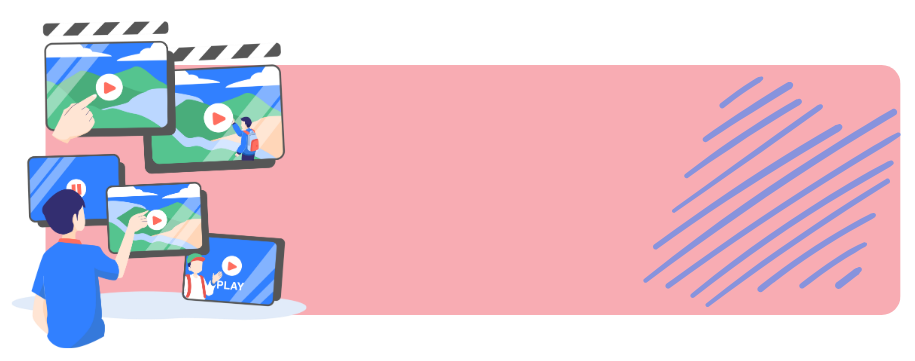
There are several ways to collaborate with creators. Your choice depends on budget, goals, and how much integration you want. Each type of YouTube ad serves different marketing strategies and goals, from audience engagement with dedicated videos to broader, more frequent exposure with mentions and integrated series. You should choose the format that best aligns with your campaign objectives and target audience preferences.
YouTube Sponsorship
YouTube sponsorships offer a win-win: creators get the opportunity to monetize their content, while brands gain access to highly engaged, targeted audiences. These campaigns allow for personalized messaging, tailored to each creator’s unique style and voice—ensuring the promotion feels like a natural extension of their content rather than a forced pitch. This authenticity fosters trust and credibility, as viewers are far more likely to consider recommendations from creators they already know and follow. And when brands lean into collaborative creativity, they can work alongside creators to craft campaigns that feel both engaging and impactful built for connection, not interruption.
YouTube Sponsorship Options
- Pre-Roll Mentions: A quick shoutout before the video starts. These work best when the creator delivers it directly (not a generic insert).
- Mid-Roll Sponsorships: Ads placed mid-video, usually around 30–90 seconds long, that feel more natural and often get higher attention.
- Full Integrations: Your product is part of the content itself. Example: a cooking creator making a recipe featuring your brand.
- Dedicated Videos: The entire video is about your product or service. This is premium inventory and should only be pursued with the right partner and strategy.
- Shorts + Community Tab: Some creators offer sponsored YouTube Shorts or post about your brand on their Community tab, extending the conversation.
YouTube Ads
YouTube offers a variety of ad formats, but not all ads are created equal—especially when it comes to engagement and brand impact. Traditional YouTube ads are managed through Google’s AdSense system. These formats are typically pre-defined and inserted automatically before, during, or after video content. While they can deliver reach, they often lack the personal connection that makes creator sponsorships so powerful.
YouTube Ad Format Options
- Skippable in-stream ads: Viewers can skip after 5 seconds.
- Non-skippable in-stream ads: Play for a set duration (15-20 seconds) and cannot be skipped.
- Bumper ads: Short, non-skippable ads (up to 6 seconds).
- In-feed video ads: Appear alongside other videos and search results.
- Masthead ads: Large ads that appear at the top of the YouTube homepage.
The Best Fit For Your Campaign Depends On Your Goals
In essence, sponsorships offer a more personalized and potentially impactful way to reach audiences, while YouTube ads provide a broader reach and more structured advertising experience
The choice between AdSense and sponsorships depends on your goals. AdSense is ideal if you’re aiming for broad reach and want to leverage targeting tools. But if you’re looking to connect with niche audiences through authentic, personalized messaging, sponsorships are the way to go. Experimenting with both options can provide valuable insights into what works best for your brand, helping you refine your strategy for future campaigns.
We created a chart that breaks down the key YouTube sponsorship types—because knowing these formats is the first step to creating a campaign that connects.
YouTube Sponsorship Rates

Sponsorship rates vary wildly based on a creator’s reach, niche, and ability to drive engagement. And if you think it’s just about paying for views, think again. You’re buying into the trust, credibility, and production value a creator brings to the table—along with factors like ad placement, video format, audience demographics, and brand alignment, all of which impact the final cost.
Rates vary depending on niche, creator size, and audience engagement—not just views. Here's a general breakdown:
- Smaller Channels (5,000–15,000 views/video): $1,000–$1,500 minimum; CPM ~$50–$100
- Mid-Tier (15,000–50,000 views/video): $1,000–$2,500; CPM ~$30–$50
- Upper-Mid (50,000–250,000 views/video): $1,250–$6,250; CPM ~$25
- Large Channels (250,000–750,000 views/video): $2,500–$11,250; CPM ~$10–$15
- Top-Tier (750,000+ views/video): $50,000+ for premium integrations
It is important to note, the MINIMUM investment is almost always $1000 and that’s even on the smallest channels. Creators spend hours of filming and editing your ad segment, and the production cost results in a minimum investment for the creator to even make the ad in the first place, regardless of how many views they get.
While average video views are a starting point—more views typically mean higher fees—sheer numbers don’t tell the full story. Engagement rates often matter more: creators whose audiences consistently like, comment, and share are building deeper connections that translate into stronger brand response. Niche demand also plays a major role. Creators in focused categories like finance, beauty, or tech often command higher rates thanks to their targeted, purchase-ready audiences. And of course, sponsorship type impacts pricing too—a quick mention costs less than a full integration or custom video segment.
For example, a YouTuber with a smaller but highly engaged audience in a specialized niche may command a higher CPM than a general entertainment channel with more passive viewers. Similarly, creators with strong conversion rates—meaning their audience actively purchases products they recommend—can justify premium pricing, even if their total view count is lower. In essence, sponsorship rates aren't solely determined by view counts; they reflect how effectively a creator's audience responds to brand messages. That's why a fitness influencer with 50,000 views might charge more than a general entertainment vlogger with 200,000 views.
FYI: In general female audiences on YouTube are going to cost you more. Anything with 60%+ female viewership likely has a female creator behind the camera - and the “day in my life” or “make-up tutorial” content that has helped them create a name for themselves takes a ton of work.
Production value plus authenticity is an important element of every YouTuber’s channel, but generally female creators are held to higher standards, and therefore assess their value at a higher CPM than male audiences. Learn more about rates in YouTube Sponsorships Rate: Learn How Much It Costs.
The Right YouTube Creator for Your Brand
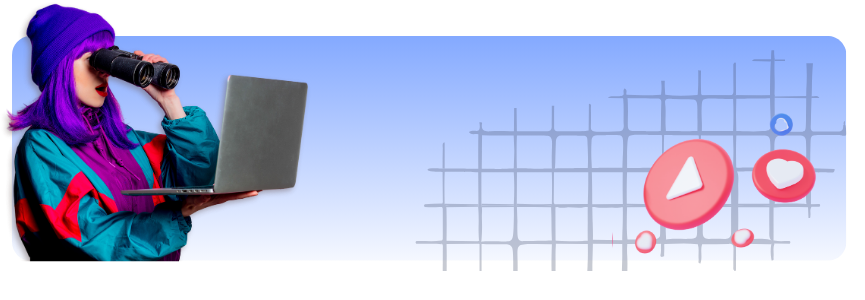
Sponsoring a YouTuber involves so much more than just financial transactions – it's an investment in partnerships that are as passionate about your brand as you! While there's no exact science to guarantee success, paying a creator a flat rate for a spotlight on their channel is a brand investment and needs a solid foundation in facts and figures
Not every big channel will be the right fit—and small doesn’t mean ineffective. You should start with identifying past brand collaborations, their frequency, and assess their success to gauge potential outcomes for your brand. Then you want to look at:
- View consistency: what do the views look like over time?
- Engagement rate: Comments and likes per video matter more than vanity subscribers.
- Audience fit: What does the creators audience demographics look like? Age range, gender and location – are they within your target demo?
- Past ads: What was the production value? Did they feel natural? Did the audience respond?
- Professionalism: Do they reply? Deliver on time? Offer a media kit?
Need a practical tool to keep your ad strategy on track? Grab our YouTube Sponsorship Campaign Checklist to ensure you hit every step.
FYI: You’re not going to find a single YouTube channel whose entire audience is YOUR potential customer.
You’re not going to find a single YouTube channel whose entire audience is YOUR potential customer because YouTube is one of the most globalized content platforms in the world. Identify the bare minimum commonality among your current customers and go from there.
Learn about what to look for when sponsoring a YouTuber – with advice from one of the world’s top buyers Elsie Kaplan.
Creative Best Practices
When a creator integrates your brand into their video, it should feel like a seamless part of their voice and style—not an off-brand detour. But even the most engaging creator can only do so much with stiff or overly scripted copy. If you want to turn viewers into customers, your ad copy needs to give them the space and tools to deliver a message that resonates. Here’s how to write YouTube ad copy that works:
- Give creators room to deliver in their voice. The best YouTube sponsorships sound like trusted recommendations. Let creators adapt the message to fit their style, tone, and audience. Encourage creators to share their own experiences or reactions. A relatable story or anecdote can turn a passive viewer into a curious customer
- Include a clear call-to-action (CTA). Whether it’s a unique promo code, QR code, or “link in the description,” your script should guide viewers on exactly what to do next.
- Highlight 1–2 key benefits: This helps the creator focus on the most impactful talking points and ensures the audience remembers what matters most.
Strong YouTube ad copy supports the creator while spotlighting your brand’s best qualities. When it’s done right, it doesn’t just inform—it influences. Need help writing great copy? We’ve got a full guide to ad creative.
Attribution & Performance Metrics for YouTube Sponsorships

Attribution on YouTube works a bit differently than in podcasting—but that doesn’t mean you’re flying blind. With the right tools in place, you can track performance across devices and viewer behaviors. Here’s how to measure what matters:
- Clicks & UTM links: A tracked link in the video description or pinned comment helps you monitor traffic, behavior, and conversions—whether users are on mobile, desktop, or tablet.
- YouTube views: Keep an eye on viewership over time. Keep an eye on how the video performs over time—especially in the first week, the first month, and the long tail beyond. Peaks in views can align with spikes in traffic or sales (hint: check your analytics timeline).
- Promo codes: Especially ideal for DTC brands. A strong, memorable promo code lets you track purchases tied to creator content. (Pro tip: avoid tricky spellings or anything that’s hard to say out loud.)
- Post-purchase surveys: Sometimes the best insights come straight from your customers. A simple “How did you hear about us?” can validate campaign impact and give creators helpful feedback.
QR Codes: A Powerful Tool for YouTube Sponsorship Tracking
QR codes are a valuable tool for YouTube attribution—especially for Smart TV viewers. With nearly 86% of people watching TV with a mobile device nearby (second screening) they offer brands a smart way to drive engagement and track customer acquisition.
These codes can create a path to action—whether it’s claiming a discount, downloading an app, or checking out a product. Campaigns using QR codes in video ads have seen scan-through rates as high as 25–37%, outperforming many standard click-through benchmarks.
To get the most out of QR codes:
- Link to a mobile-friendly, relevant landing page.
- Keep the offer up-to-date or set up a redirect if it expires.
- Give viewers at least 15 seconds on screen to spot and scan the code.
- For shorter placements, opt for a short, memorable UTM or vanity URL.
YouTube With Podcast Advertising = Stronger Results

While YouTube sponsorships aren’t a fit for every brand, when they are—pairing them with podcast campaigns can be a serious power move. Many of our highest-performing clients don’t treat YouTube and podcasts as either/or. They use both to amplify reach, reinforce messaging, and deepen impact across platforms. Here’s why the combo works:
- They reach overlapping—but differently engaged—audiences. Podcasts are intimate. YouTube is visual. When your brand shows up in both spaces, you meet your audience in multiple moments—whether they’re multitasking with headphones or locked into a video deep dive.
- They reinforce your message without repeating yourself. Cross-platform campaigns allow for creative variations of the same core message. Hearing about your product in a podcast and then seeing it on YouTube helps your brand stick—without feeling like a copy-paste job.
- They build familiarity, which builds trust. A single touchpoint can raise awareness, but multi-touch exposure builds belief. When creators your audience already trusts mention your brand across platforms, it doesn't just sound like advertising—it sounds like proof.
- They give you more to work with (and learn from). YouTube delivers clicks and view-time data; podcasts deliver long-tail engagement and direct listener feedback (like post-purchase survey mentions). Together, they create a richer attribution picture and more room for optimization. Check out how Magic Spoon leveraged both in this case study.
- They scale differently, but complementarily. YouTube is great for visual storytelling, product demos, and national reach. Podcasts offer more intimacy, loyalty, and direct conversion potential. When aligned, the two build a stronger foundation for brand lift, recall, and action.
FYI: A dual-channel approach isn’t the right fit for every brand. t’s all about knowing and understanding your campaign goals—and picking the mix that meets them.
As we mentioned earlier, YouTube isn't ideal for ultra-local, time-sensitive, or hyper-targeted campaigns. In those cases, podcast ads (or even Google Search) may offer better value. It’s all about knowing and understanding your campaign goals—and picking the mix that meets them. Explore our Ultimate Podcast Advertising Guide to see how the two can work together.
Final Thoughts

YouTube sponsorships aren’t just about impressions. They’re about influence. When you partner with the right creators, you gain access to engaged communities built on trust. It’s a smart investment when done with strategy, support, and measurable outcomes in mind.
If you're curious about building your own creator strategy or wondering whether YouTube sponsorships align with your brand’s objectives and budget, our VP of Sales, Elsie Kaplan—one of the world’s top buyers in YouTube partnerships—can help.
ADOPTER Media offers a complimentary strategy session to help brands navigate budgets, creators, and performance metrics with confidence, ensuring you can determine if it’s the right fit and timing for your brand.
ADOPTER Media
We believe in data-driven results and are dedicated to helping everyone make better decisions and advance their work using a platform trusted by Fortune 500 companies and beloved regional brands alike. Have a question about podcast advertising or YouTube sponsorship? Connect with us and we will be happy to help!
